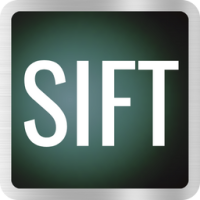Sift - Overview
| Language: | English • français • italiano • português • español |
|---|
Sift. Your Ultimate Biomechanics Data Analysis Companion.

Tailored for users handling large biomechanical datasets, Sift is your solution for seamless data analysis with no exporting necessary. Load multiple CMZ libraries simultaneously, simplify data management, and conquer unwieldy databases effortlessly. Dive straight into your datasets with a variety of visualization tools, cutting-edge analysis techniques, and seamless integration of the Visual3D engine into this stand alone application. From incorporating Visual3D pipeline commands to performing Statistical Parametric Mapping, Principal Component Analysis, or outlier detection algorithms, Sift empowers you to complete comprehensive biomechanics analyses within a single application. Experience the power of Sift and unlock the true potential of your data today!
Sift allows users to: load multiple C3D files, detect and remove outliers manually or through Dynamic Time Warping, group signals based on unique and custom conditions, complete advanced analyses through built in Principal Component Analysis, curve registration, Statistical Parametric Mapping, and gait measures, and produce customized visualizations.
Sift is designed to integrate seamlessly with Visual3D. Where Visual3D is primarily a session-based tool for processing motion capture data, Sift lets researchers take their Visual3D results and process them at study-level. Additionally, users can leverage the power of the Visual3D engine by running pipeline commands on loaded CMZ libraries directly through Sift's interface.
At its heart, Sift is all about helping researchers through the knowledge discovery process: collecting, cleaning, shaping, and analysing their data before communicating their results.
- Collecting data: Sift lets you load CMO files containing all of the C3D files associated with your study.
- Cleaning data: Your data can be visualized easily as individual traces, workspace means, or group means. You can click on specific data traces and choose to exclude them from analysis. Early data visualization and formal outlier detection techniques help you ensure that only valid data is used for your analysis. Take this a step further by performing Dynamic Time Warping and QA techniques to verify that you didn't miss any outlier traces or subjects in one thorough sweep.
- Shaping data: A single study can contain multiple questions, each looking at the underlying data in different ways. Sift can automatically group signals for you or you can define your own custom queries based on tags, events, or expressions. Common signal groups include Left and Right signals, Affected and Unaffected sides, and Pitching vs. Non-pitching sides.
- Performing analysis: Sift implements common data analysis techniques such as summary statistics calculation, principal component analysis, Statistical Parametric Mapping, Dynamic Time Warping, Gait Measures, and clustering algorithms.
- Communicating results: Analysis results can be exported to a number of different text formats including Visual3D ASCII, P2D, and SPSS. Each of the different visualization tools also give you complete control over colours used, line styles, and axis labels to allow you to produce the figures that you want.
Ready to see how you can used Sift in your research? Get Started!